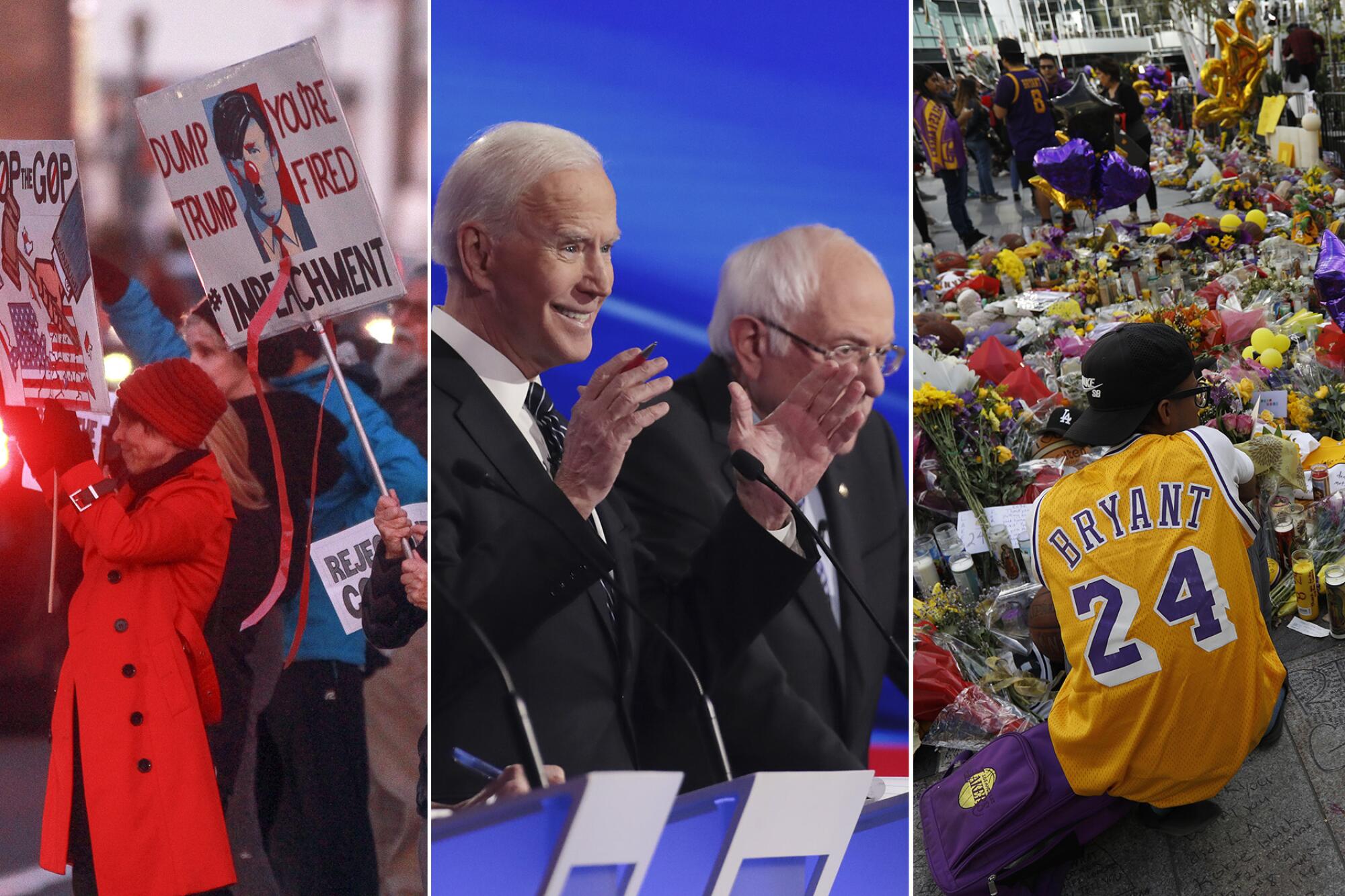
- Share via
The intruder crept in while we were thinking about other things.
About how much we loved, or loathed, our president. About whether the Lakers or Clippers had loaded up best for an NBA championship run. About whether there was room on our New Year’s Eve schedules to check out that Korean boy band, BTS, playing a gig from Times Square. Maybe even about whether the car needed new tires.
America’s quotidian concerns loomed large in those waning days of 2019 and the start of the new year. But the everyday shrank away for a coterie of researchers, physicians, public health officers and science journalists, connected by the internet and by their uncommon concern for the deadly germs that lurk along the animal-human divide.
It began for Peter Daszak, a British American scientist, a couple of days after Christmas. While the rest of the world trundled along, the president of the New York-based EcoHealth Alliance was in his office in lower Manhattan, picking up the first clues of something amiss.
Weibo, China’s Twitter, carried the warning signals: An odd illness in the city of Wuhan. Patients in respiratory distress. Some developing pneumonia. A few dying, or so said the reports, unconfirmed. Most of the sick had worked in, or visited, a “wet” market in the central Chinese city, where live fish, crabs and livestock are sold, gill-by-jowl, alongside more exotic fare, such as snakes, hedgehogs and bamboo rats.
An ebullient zoologist and parasitologist, Daszak had associates around the globe in the One Health movement — the professional community trying to prevent the spread of disease between the animal and human worlds. But, as New Year’s approached, his colleagues in China suddenly went mum.
“They were all saying ‘I’m sorry, I can’t talk. We’re very busy. We’ll talk to you soon.’ They wouldn’t respond, even to a ‘Happy New Year’s’ message. That wasn’t normal,” Daszak recalled. “That’s when you know, you just know, something serious is going down.”
A timeline shows the course of the coronavirus pandemic and the events that were grabbing our attention.
Those fleeting days of 2019 and the first three months of 2020 have passed in a blur for America and the world, turned upside down by a virus previously not identified by humankind and now responsible for a death toll that has climbed past 100,000.
For the 54-year-old Daszak and his fellow germ trackers, it’s been a period of long hours and roiling emotions — anxiety about the trajectory of the killer they spotted in its first days, a queasy satisfaction that their years of warnings had not been misplaced and a stolid determination to do more to prepare the world for the pandemics yet to come.
There’s also frustration, and some anger, as they watch world leaders move too slowly to marshal healthcare workers, set aside medical supplies and, especially, to isolate millions of people with no immunity to the new invader.

It appears probable that the disease found its first human victim as early as October, and that the virus now labeled SARS-CoV-2 likely originated in the tiny horseshoe bat, not much bigger than a large moth. Reporting by award-winning disease journalist Laurie Garrett suggests that the outbreak might not even have originated in the South China Seafood Market, implicated by the Chinese government. The hunt for answers continues.
“We’ve talked about this in the abstract form for years,” said Daszak from his home in the Hudson River Valley, where he is now sheltering in place with his wife and two grown daughters. “When we go to policy-makers and say, ‘Look, this could be the next big one.’ Then afterward we might think, ‘Well, am I over-exaggerating the risk?’
“Now it’s just the most bizarre feeling. The bat coronavirus, one of the many that we have worked on for years, is here, in my neighborhood. It’s around the world. And it’s killing people.”
Daszak and his team at EcoHealth Alliance weren’t the only ones scrambling at the end of 2019 to understand the tidbits escaping from Wuhan, a sprawling city of more than 11 million in central China’s Hubei province.
In mid-December, Lawrence Gostin, a professor of global health law at Georgetown Law, had a guest over to dinner. “I just heard from a friend in Wuhan that there is a novel coronavirus, and it looks very serious,” Gostin remembered saying. “He just said, ‘Pass the biscuits.’ ” Few people grasped the potentially catastrophic implications of an outbreak in China. Gostin would spend the next weeks imploring international bodies to take this new threat seriously.
On Dec. 30, Marjorie Pollack and her husband had just finished dinner at their weekend home on the far end of Long Island. About 9 p.m., the physician-epidemiologist checked her email and found a Weibo alert. It included what looked like a photograph of an urgent notice from Wuhan’s Municipal Health Committee about several cases of pneumonia, of unknown cause.
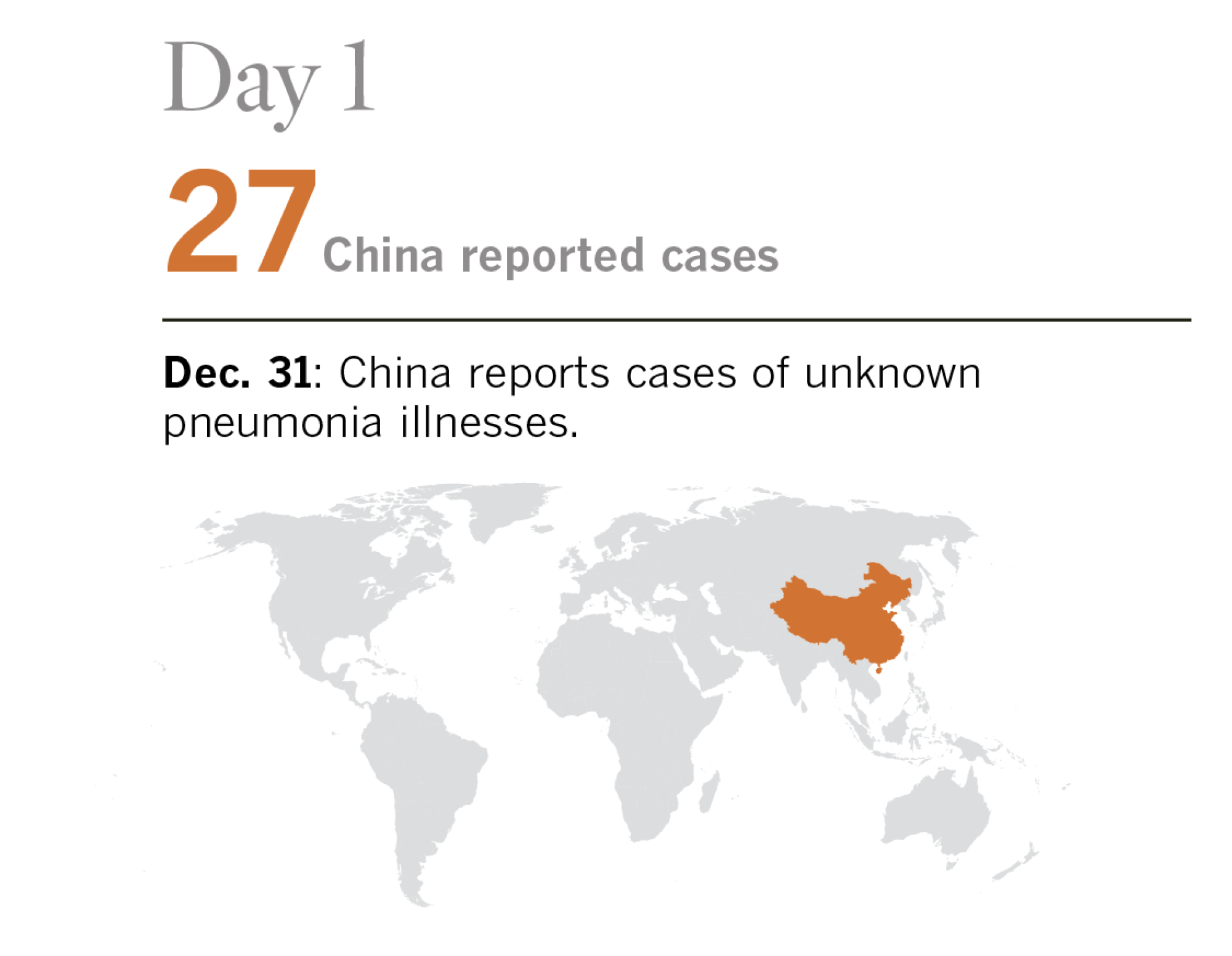
As deputy editor of ProMED, an email service with more than 80,000 subscribers worldwide, Pollack had fielded scores of messages like this one. It was her job to suss out real public health threats from the background noise and to deliver notices to an audience of doctors and health professionals.
Pollack quickly found the verification she needed. China Business News had confirmed the Health Committee alert was real. One minute before midnight on Dec. 30, Pollack hit send on a ProMED email, “Undiagnosed pneumonia,” followed by “RFI,” Request for Information.
In the middle of New Year’s Eve day, Helen Branswell opened the email and stopped. The veteran journalist for the health website STATnews.com had been finishing a project on an Ebola vaccine. She supposedly had the day off. “Hopefully this is nothing out of the ordinary,” she wrote on Twitter. The ProMED notice, she said, “is giving me #SARS flashbacks.”
That observation, from a full-time infectious-disease sleuth, was no small matter. Severe Acute Respiratory Syndrome appeared in China in 2003 before sweeping much of the globe. Caused by a coronavirus from a small mammal, the illness sickened far fewer people than the current COVID-19 virus, about 8,000 worldwide. But it killed with greater efficiency, taking roughly one in 10 it infected.
Since its 1994 founding, ProMED had become an essential tool for public health officers, also offering the first worldwide alerts on SARS and on MERS, another of what epidemiologists call a “spillover” coronavirus from the animal world, which emerged in Saudi Arabia in September 2012.
“The earlier people know about a problem, the sooner they are preparing,” Pollack said. Preparing means more time to quarantine sick patients, to ready tests, to scale up clinics. “Preparing,” Pollack said, “can save lives.”
Though solidly beyond retirement age, Pollack is an “adrenaline junkie,” her lawyer husband tells her. She would need that fuel in the coming weeks, working on as little as three hours’ sleep as she foraged for updates.
Daszak, too, worried about another SARS, or worse — tweeting his concern in the predawn hours New Year’s Eve. But he also took heart that there was not yet a sign of a wider outbreak and that the Chinese public health system had been upgraded. “Let’s hope this is not a novel viral agent,” he tweeted.
The ProMED alert served as a global tripwire. Soon, Pollack’s inbox overflowed with 1,200 Weibo alerts a day. Emails poured into the small, mostly volunteer organization — which is sponsored by the International Society for Infectious Diseases.
It was three days later, on Jan. 3, that President Trump’s appointee as secretary of Health and Human Services, Alex Azar, said he was alerted to the initial reports of the virus. He got the news from the federal Centers for Disease Control and Prevention.
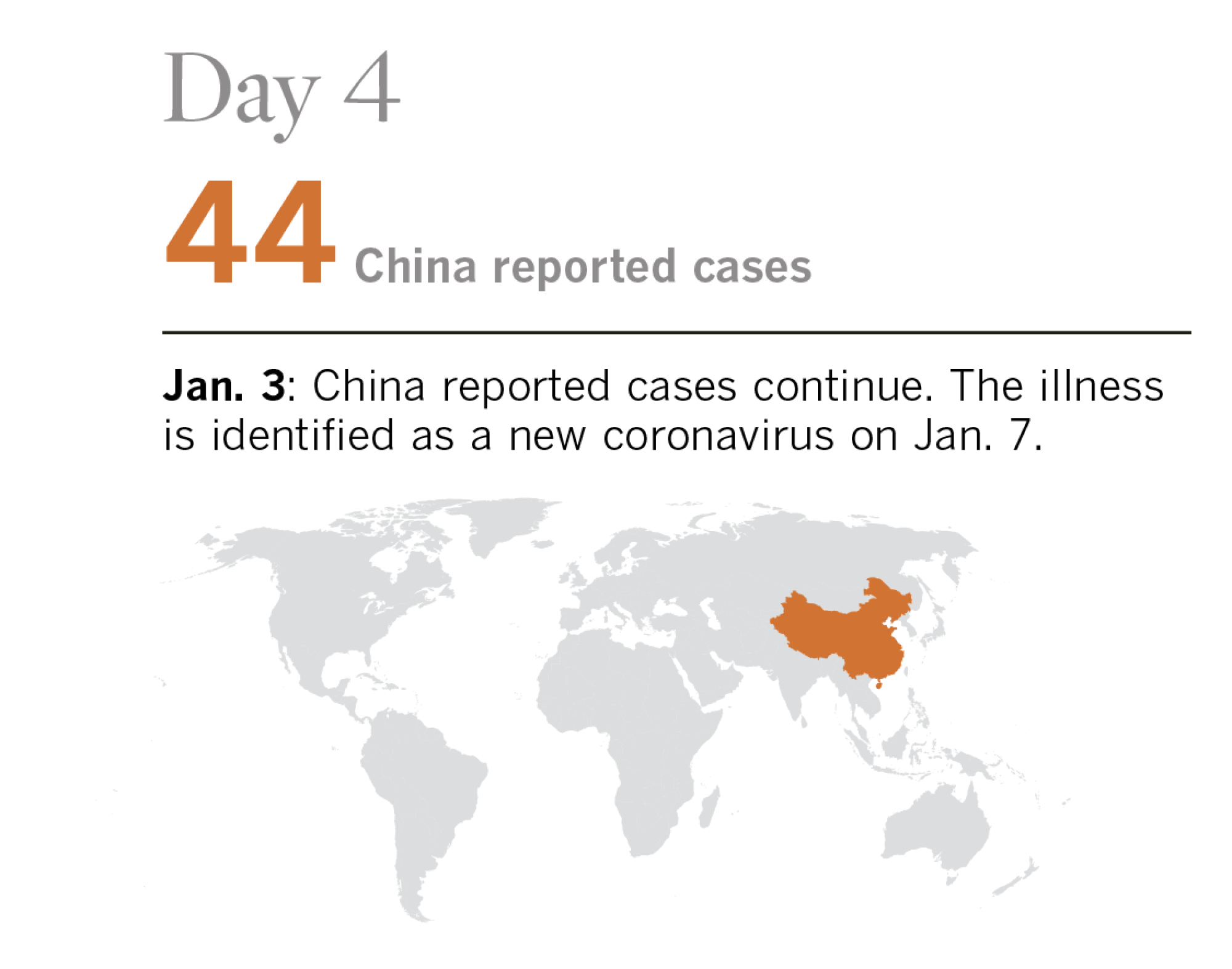
Five days after that, the Chinese confirmed they had sequenced a full coronavirus genome, finding evidence of the pathogen in 15 people. The genetic mapping cleared the way to create tests and hunt down the roots of the illness. (Though later investigation would show that this news had been suppressed and greatly underestimated the disease’s early spread.)
At STAT News in Boston, Branswell tweeted off a series of questions troubling her colleagues worldwide: “How did the new coronavirus jump to people? From what species? And are animals infected with it found in other markets?” Her sober conclusion: “Can’t assume that one seafood market would be the sole transmission location.”
Still, the illness’ lethality remained theoretical until Jan. 11, when Chinese state media finally confirmed the first death from the virus. It was a 61-year-old man, a regular customer at the South China Seafood Market. A full month before the World Health Organization would declare a pandemic, Daszak did not mince words, alerting his 6,300 Twitter followers: “A clear and present danger for pandemic emergence!”
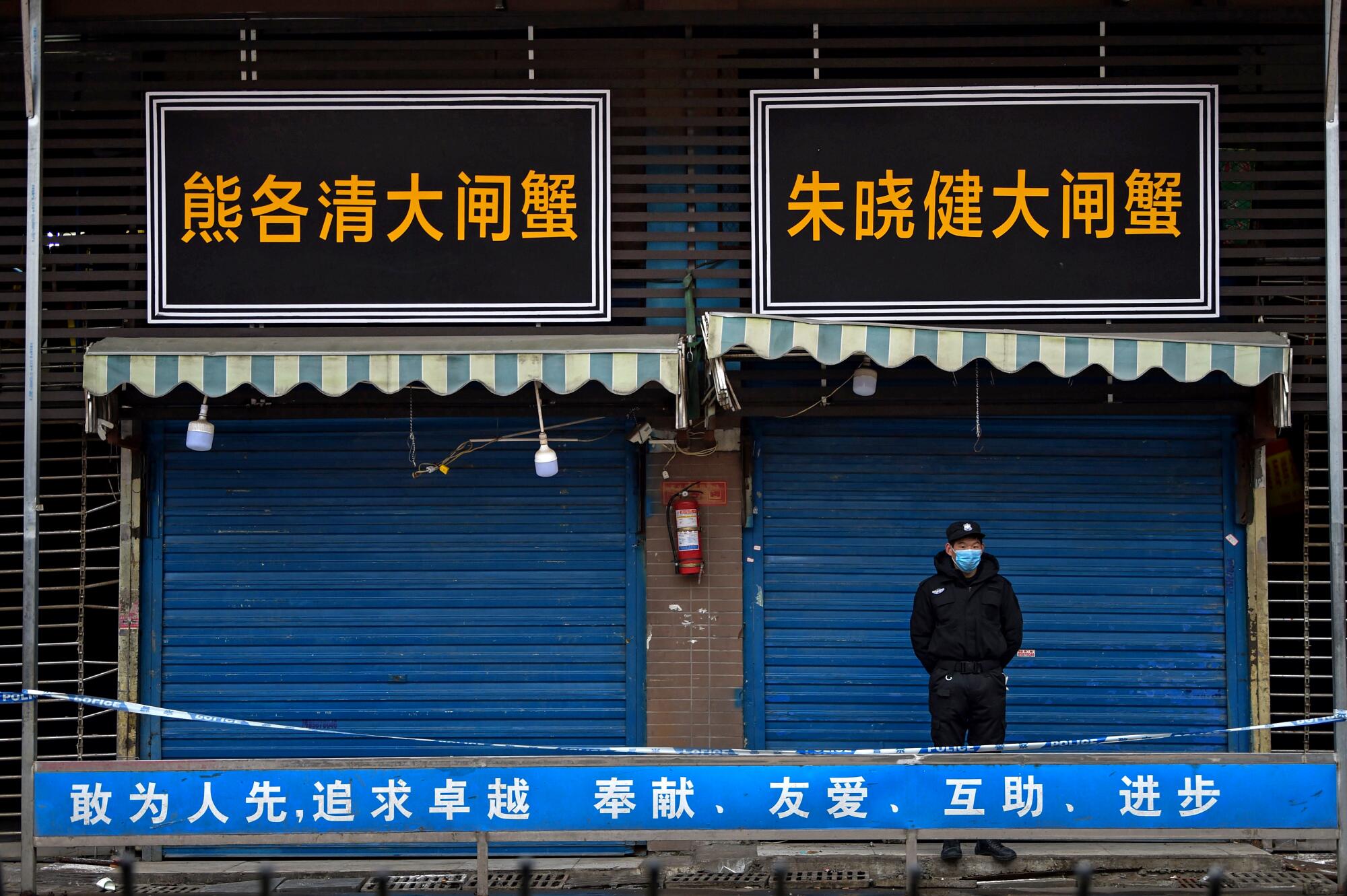
Daszak’s wife, an immunologist, didn’t dally. She soon bought surgical masks, gloves, bleach, paper towels and other gear for a “pandemic box.” Enough supplies to quarantine for two weeks.
The looming crisis had the EcoHealth Alliance president wracking his brain: “There is a kind of guilt you feel. …Why weren’t we louder? Why weren’t we more aggressive and more anxious and activist about the concern?”
But the public record suggests Daszak and his colleagues had not been quiet. As far back as 2005, he and colleagues warned how bats, in particular, carried dangerous SARS-like viruses. Five years ago, he co-authored a paper spelling out the likelihood that another bat-borne coronavirus would emerge in humans.
Daszak and colleagues such as Jonna Mazet at UC Davis in California have pushed for years for increased funding of programs that to track so-called zoonotic viruses that transfer to humans, and for the creation of programs to prevent the spillover between species.
The creatures’ waste can be ingested by livestock or make its way more directly to humans. In China, bat feces is used as an ingredient in folk remedies, and bat meat is considered a delicacy in some parts of the country. In 2015, Daszak told Wired: “I think people should stop hunting bats and stop eating bats.”
On Jan. 13, hopes that the Chinese would contain the virus domestically evaporated. A case popped up in Thailand. Another emerged two days later, in Japan. At Johns Hopkins University’s Center for Health Security, its highly respected director, Tom Inglesby, saw the “offramps” to a worldwide crisis narrowing. “A very important time,” he tweeted, “to set course for a wide surveillance strategy.”
The picture was even more dire than the West had been led to believe, it was later revealed in an interview with Yuen Kwok-yung, a Hong Kong-based scientist allowed to visit Wuhan on Jan. 17. Doctors there appeared to have been coached to withhold details of the illness. Yuen, a renowned infectious-disease expert, told Chinese public health officials that Wuhan needed to be locked down immediately. The window to prevent a huge spread “was very small.”
As January progressed, Gostin, the Georgetown Law professor, began calling for the World Health Organization to declare a global health emergency. He stressed the need for independent verification of the reports from China. Having served to reform the WHO and on numerous commissions after the Ebola outbreak, Gostin knew the need for a global response. But unable to enter China without an invitation, the WHO wasn’t able to send people to the country for field visits until mid-February.
As the virus slowly advanced, courtesy of its human hosts, the American media’s eyes remained firmly locked on other things. Furious partisan sparring preceded Trump’s impending impeachment trial. Democratic challengers flooded Iowa, which would hold its caucuses at the start of February, though a “monumental” Pete Buttigieg victory would ultimately leave him, still, as the former mayor of South Bend, Ind.
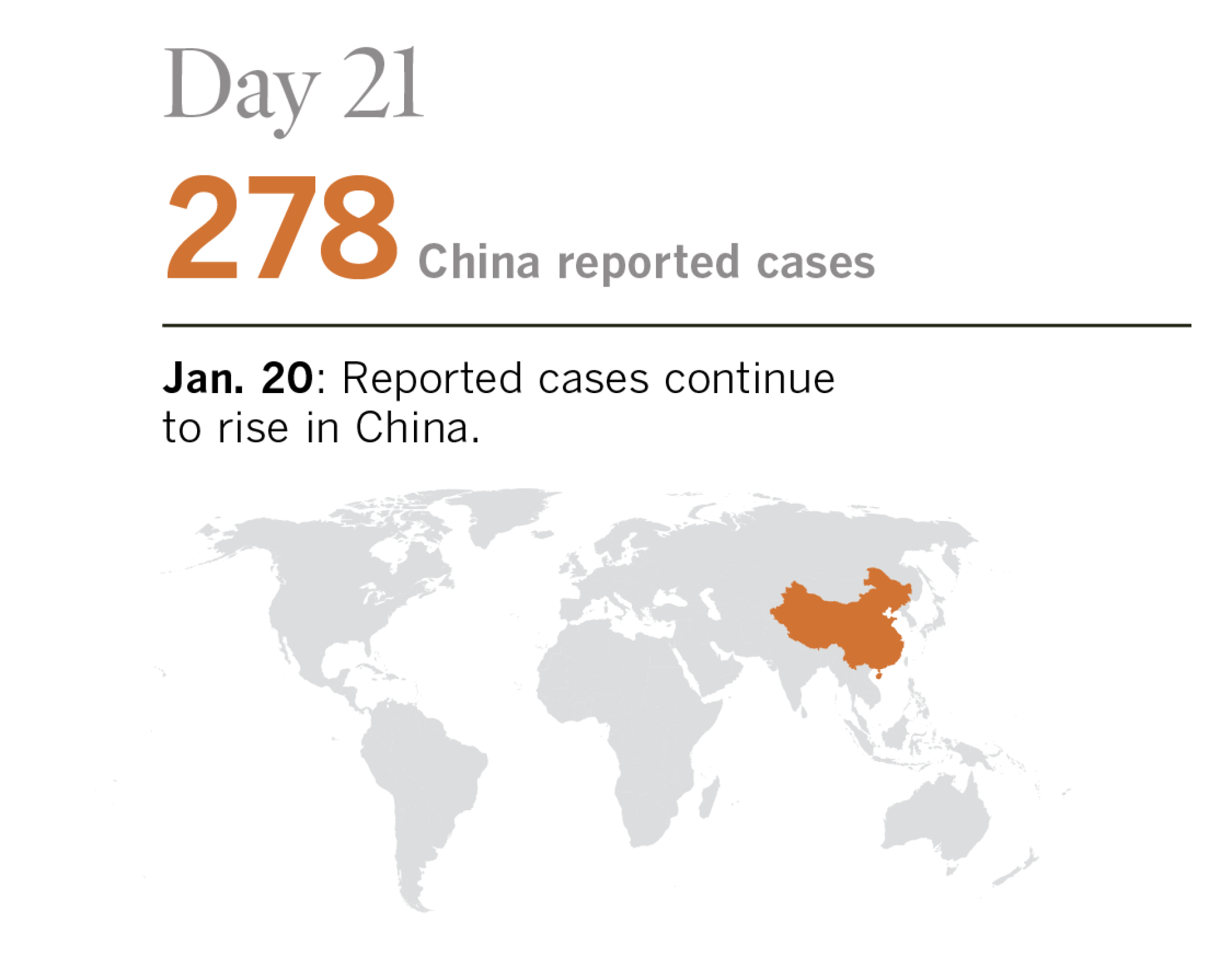
Viruses have no regard for human constructs such as national boundaries, or even natural ones, like oceans. On Jan. 19, a 35-year-old man who had visited family, and the wet market in Wuhan, entered an urgent care clinic in Snohomish County, Wash. He had been coughing for four days, with a light fever. A day later, the Centers for Disease Control and Prevention tested his nasal swab and made it official: The coronavirus had arrived in America.
CNBC’s Joe Kernen asked Trump on Jan. 22 about the possibility of a pandemic. “No. Not at all,” the president responded. “And we have it totally under control. It’s one person coming in from China, and we have it under control. It’s going to be just fine.” It would be the first of many reassurances from Trump, and a few other elected officials, that would prove overblown.
Even the virus watchers, armed with their expertise, marveled at the virus’ headlong progress. “I still find myself flabbergasted this is happening,” Branswell said, weeks later. “We’ve all been through a relatively recent pandemic, the H1N1 pandemic of 2009. It was pretty mild. ... I would have thought it would be a long time till the next one. And I was definitely hoping not to ever experience one as devastating as this one is and will be.”

By mid-January, most public health experts in the U.S. had gotten the message from the germ hunters, in no uncertain terms.
Exits on the freeway to pandemic had whizzed by: the virus quickly skipped from animal-to-human to human-to-human transmission, it leaped outside of China and it sped across continents in disguise; as many as 25% of its carriers apparently healthy even as they unwittingly exposed their friends and families to a pathogen with no known cure.
“This is one of the smartest viruses we’ve run across,” Pollack said. “It’s insidious. It gets out there quickly and quietly.”
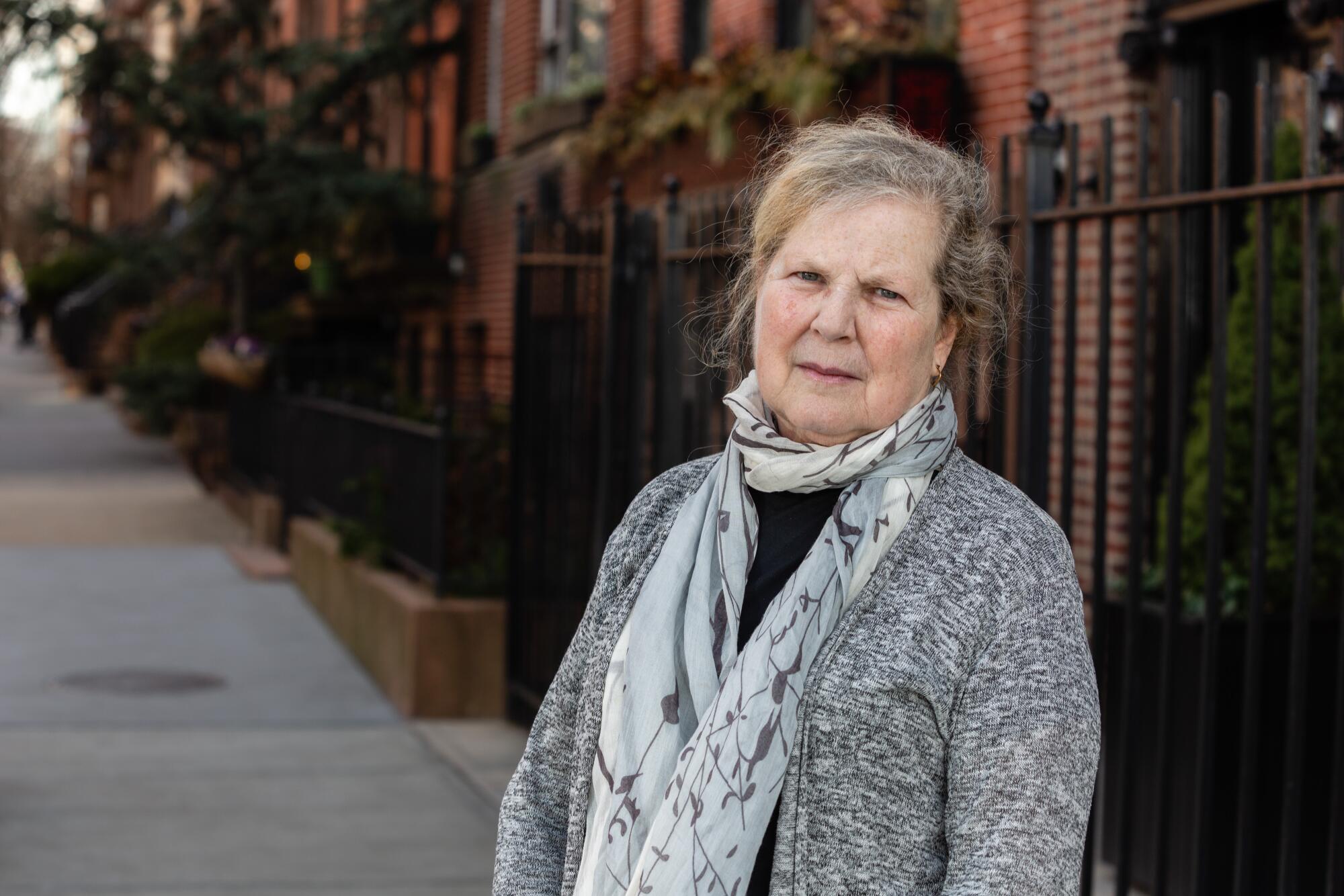
At a level slightly removed from the germ hunters were the public health academics, who had to decide what message to deliver to elected leaders.
“There’s always this balance between people being worried that they will overreact and that they will underreact,” said Inglesby, of the Center for Health Security. “If you go too far, political leaders will say you blew it and diverted resources. If you underreact, everyone stays asleep too long and it’s out of control.”
The online chatter from the Pollacks and Branswells and Daszaks spoke with one voice. “All of these people and others were very worried that people were going to underreact and not appreciate what was happening,” said Inglesby, a physician and infectious-disease authority. “You could just feel the slow burn.”
On Jan. 23, Inglesby told Science Insider that the World Health Organization needed to raise its alert level to a Public Health Emergency of International Concern, to urge the world to a more coordinated response.
A day later, Trump assured the country, “It will all work out well.” Americans mused about the upcoming Super Bowl between the Kansas City Chiefs and the San Francisco 49ers. Democrats prosecuted their impeachment case against Trump. And, on a foggy Sunday morning, an executive helicopter plowed into a hillside in Calabasas.
The Jan. 26 death of basketball legend Kobe Bryant, his daughter Gianna and seven others dominated the news for weeks. In the week that followed the crash, the Los Angeles Times published 37 stories that mentioned the coronavirus and 101 on the Bryant tragedy. Basketball fans and commentators agreed: the world had changed.
But one group of leaders, in South Korea, focused on the advancing virus. On Jan. 27, they pulled infectious-disease experts away from Lunar New Year celebrations to a special meeting at a Seoul train station, along with representatives from 20 drug companies, to design a test for the virus, Reuters reported. Less than a week later, the first tests had been approved. By the end of February, South Korea was testing thousands of its people daily, many in drive-through centers.
The United States, meanwhile, counted on the Centers for Disease Control. And it sent out test kits with a “faulty chemical.” That meant local labs in Los Angeles, San Francisco and other cities could not do the surveillance testing needed to track down asymptomatic patients, including those unwitting souls who would become “super spreaders” of the disease.
“We didn’t have the technology we needed in the right places. And we started testing too slowly,” Inglesby said. “We therefore didn’t have time to do the social distancing we would need to do.”
The divergence between amateur and expert opinion continued. On Feb. 10, Trump told a rally in New Hampshire: “Looks like by April, you know, in theory, when it gets a little warmer, it miraculously goes away.”
A day later, an infectious-disease expert in Hong Kong warned that, without containment measures, two-thirds of the world could be infected.
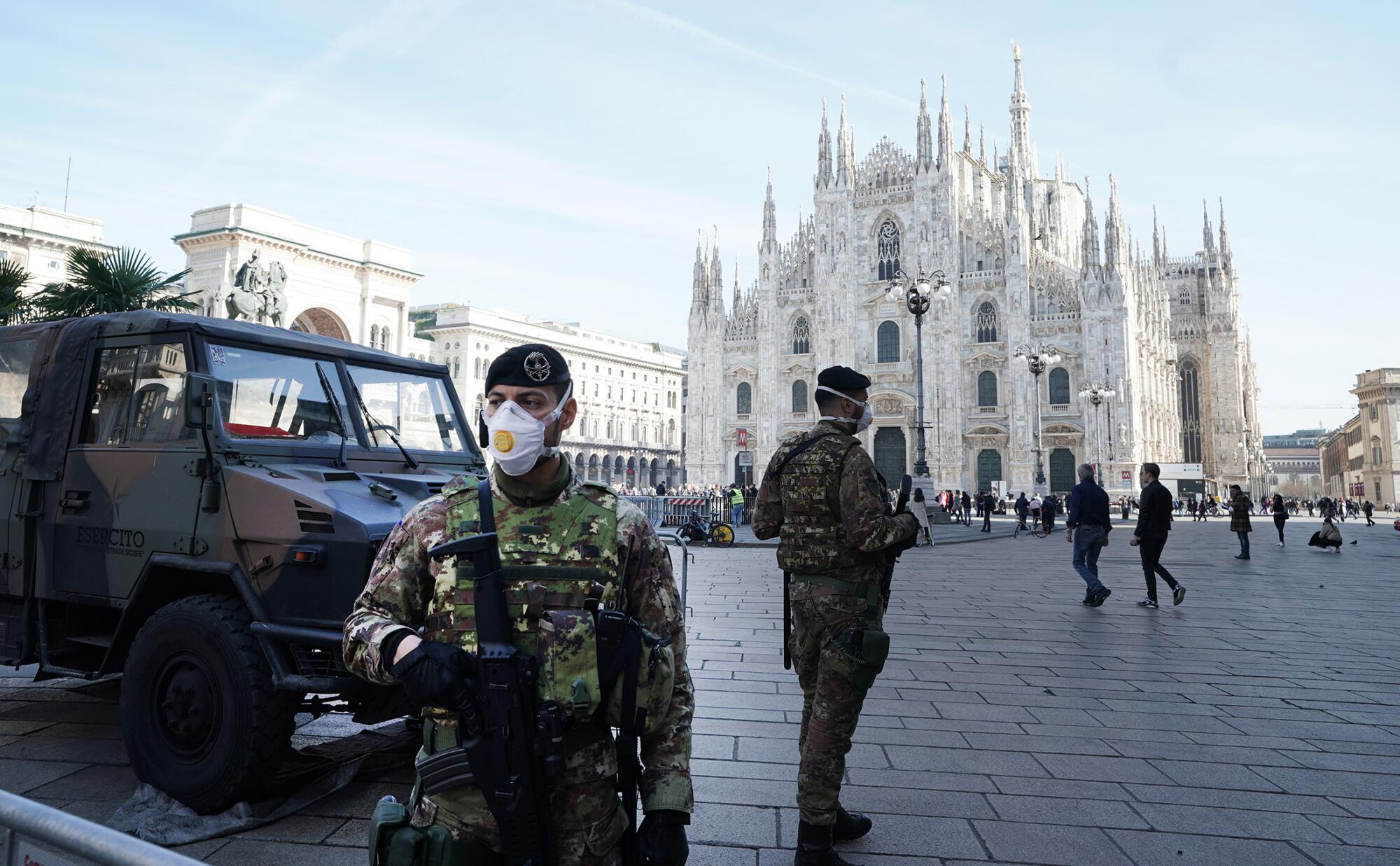
America continued to see itself as a series of ponds, with just a few — in Seattle and Silicon Valley, to start — tainted by disease. Mayor Bill de Blasio and other New York officials urged people to go about their lives in mid-February. New Orleans celebrated a rip-roaring Mardi Gras — sharing hugs and drinking glasses — through almost the end of the month.
Few were heeding the experts who insisted that the nation, the world, had become one ocean of disease and that its currents might be delayed but would eventually reach every shore. A UC San Francisco doctor posted a paper in mid-February warning that the virus wasn’t just airborne; it might live on some surfaces for up to two days.
Touring California to stress the crisis among the homeless, Gov. Gavin Newsom did not hold his first news conference on the coronavirus until the end of February. He pushed for more testing and pledged that he would strike a balance between under- and overreacting, noting “the understandable anxiety many people have.”
At a February 28 news conference, Trump said “It’s going to disappear. One day it’s like a miracle, it will disappear,” adding “It could get worse before it gets better. It could maybe go away. We’ll see what happens. Nobody really knows.”
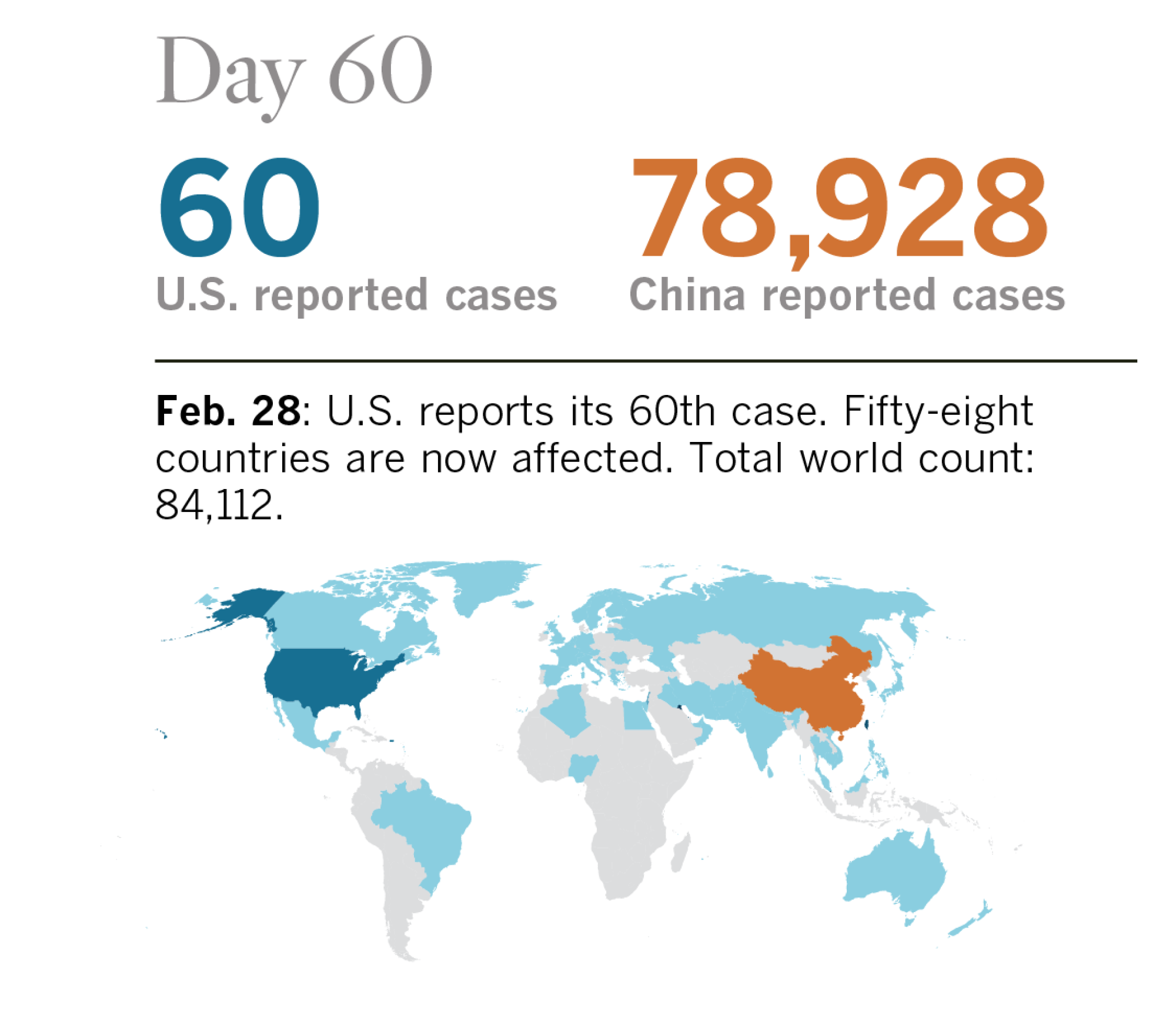
In the following weeks, the president would tout statistics to suggest the common flu was more lethal, quote a friendly congressman who suggested that construction of a border wall with Mexico would help slow the spread of the virus, and attack President Obama’s (and Vice President Biden’s) response to the 2009 H1N1 swine flu as a “full-scale disaster.”
It was then that the response in cities and states began to diverge sharply with the White House. By March 16, seven San Francisco Bay Area counties had ordered residents to stay home to slow the spread of the virus. California Gov. Newsom followed three days later with a statewide shelter-in-place order. On March 20, New York Gov. Andrew Cuomo followed suit.
At a March 24 town hall on the Fox News network, the president said he wanted the nation “opened up and just raring to go by Easter.” He said he looked forward to seeing churches “packed” on that day.
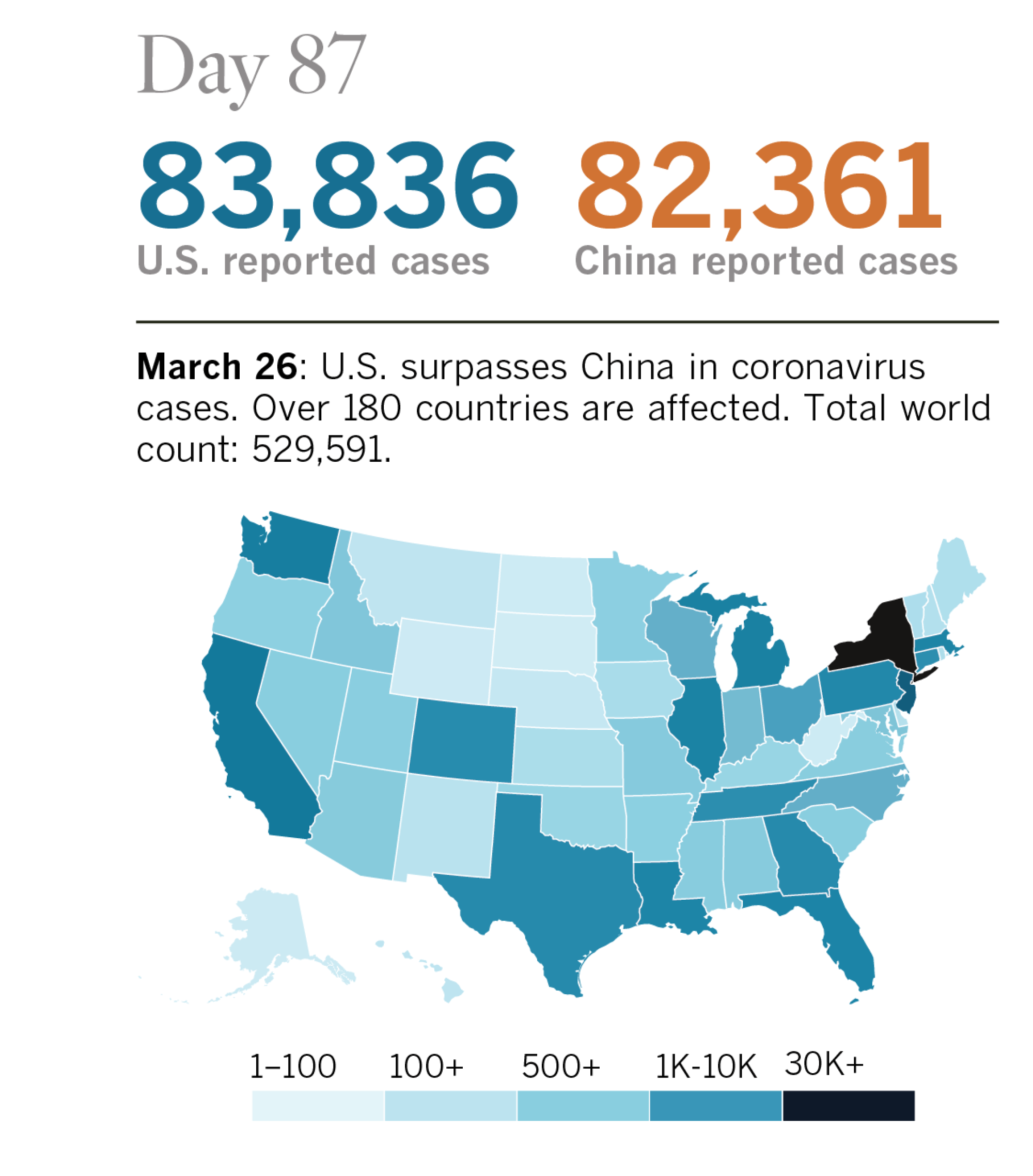
Public health experts cringed. On March 27, the U.S. surpassed China in confirmed coronavirus cases, with more than 81,000 ill and nearly 1,300 dead. (Though there is some suspicion about underreporting by the Chinese, given their early attempts to minimize the danger from the disease.)
Even before Trump’s “Easter” pronouncement, Inglesby had become alarmed by statements from political leaders about getting America back to work and school without social distancing precautions.
“COVID would spread widely, rapidly, terribly, could kill potentially millions in the [year] ahead with huge social and economic impact across the country,” he tweeted on March 23. He pleaded, in an interview with The Times, for Americans to continue their sacrifice, “for their fellow Americans and for healthcare workers, who are risking their health and safety to care for the rest of us.”
Before a cruel April would begin, a certain madness seemed to descend on some in America and around the world. Wild conspiracy theories about China, or America, releasing the virus gained steam inside the social media hothouse. Daszak had seen an American colleague — who had cloned bat viruses to search for medicines that might contain them — attacked for allegedly releasing SARS-CoV-2 into the world. The blasphemy churned over Twitter.
“To put pressure and threats on a guy who’s trying to save your life?” Daszak said of his colleague. “Well, that’s just dumb as a rock.”
New Orleans, slow to take up social distancing, had become a hotbed of the illness. Still, Daszak had seen how Sweden, where his brother lives and sings opera, would wait until April to even begin to ask people to stay home. It defied all science and logic. “That sort of thing,” he sighed, “can extend the life of a pandemic.”
The virologist had observed the way viruses move in the real world. He had watched humankind intruding, ever farther, into regions where exotic creatures released germs for which we have no defenses. From the pandemic’s early days, Daszak accepted a simple truth. “We’re all going to know someone who will die,” he explained. “We have to get emotionally prepared for that.”
By April, the idea was no longer theoretical. An octogenarian Daszak had known for decades, and held dear, had died.
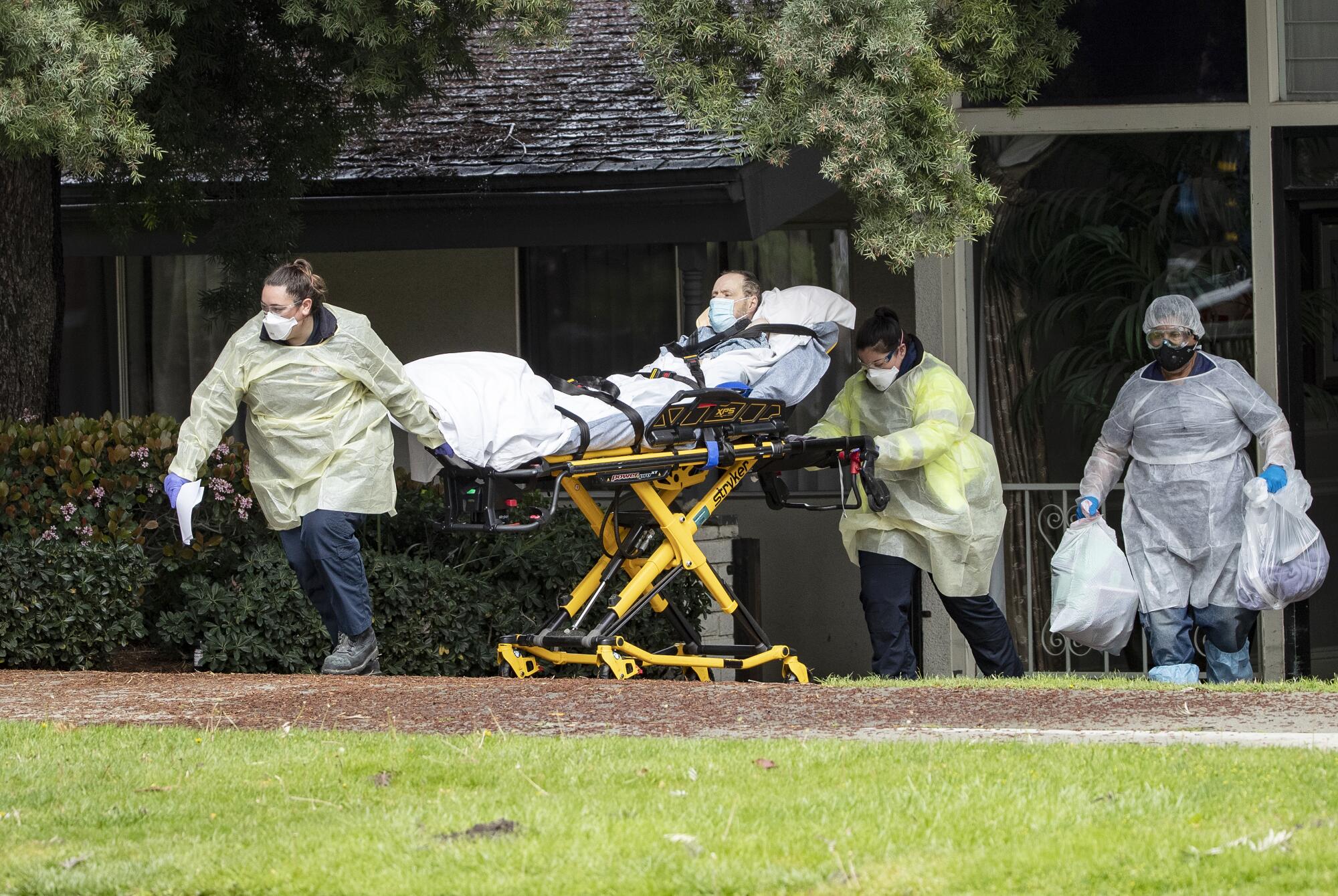
In the scientist’s home Suffern, N.Y, vultures continued to perch on his roof, conjuring a “nightmare vision” in which the birds came to him like an invasion of bats. “It’s like [they’ve] flown all the way from China. They’re now in your neighborhood and they’re all over the world.

“It’s just the Grim Reaper, you know. This is what’s going on right now,” he said. “You are getting a tap on the shoulder, with COVID, and you don’t know if you’re going to make it to the other side.”
In all likelihood, the vast majority of Americans will survive, as will Daszak and his wife. They have outfitted a “safe room” on the top floor of the family’s farmhouse, suited to accommodate either the couple or their daughters, one home from high school, the other from college.
The scientist and his fellow virus hunters know the great coronavirus pandemic is hardly over. But they already can’t help but think about the next time.
“We have many viruses out there we know already are able to invade humans,” Daszak said. “And they are still out there. People are still exposed to them. So the next one will come. Unless we change our strategy and pay attention.”
More to Read
Sign up for Essential California
The most important California stories and recommendations in your inbox every morning.
You may occasionally receive promotional content from the Los Angeles Times.












